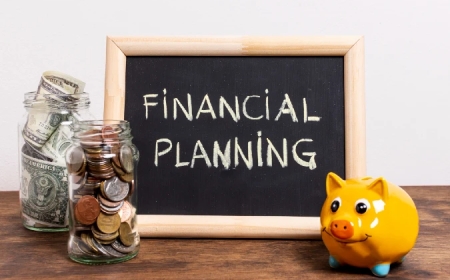Is Building a Self-Storage Unit Worth It? A Cost vs. Return Breakdown
Explore the real cost of building storage units in 2025 and learn whether it's a profitable investment. Full cost vs. return breakdown for new developers.

The self-storage industry has quietly become one of the most reliable and profitable real estate investments of the last two decades. With rising housing costs, e-commerce expansion, and a culture of mobility, the demand for extra storage space continues to soar. But is it actually worth it to build your own facility? In this guide, well break down the cost of building storage units, explore what impacts profitability, and help you determine if its the right investment for you.
The Growing Appeal of Self-Storage Investments
Investing in self-storage offers several advantages:
-
Low operating costs
-
High demand in both good and bad economies
-
Scalable growth models
-
Minimal tenant issues compared to residential rentals
Whether youre an entrepreneur, real estate investor, or contractor considering expansion, building a self-storage facility can be a strong long-term assetif done right.
The Real Cost of Building Storage Units in 2025
The cost of building storage units in 2025 typically ranges from $60 to $110 per square foot, depending on the location, size, and type of facility. That means a standard 40,000 square foot facility could cost between $2.4 million and $4.4 million from land acquisition to completion.
Heres a basic breakdown of costs for a 40,000 sq. ft. facility:
| Expense | Estimated Cost |
|---|---|
| Land Acquisition | $300,000 $1,000,000 |
| Site Prep & Utilities | $75,000 $150,000 |
| Construction (Shell & Interior) | $2.4M $4.4M |
| Permits & Legal Fees | $25,000 $100,000 |
| Security & Access Systems | $50,000 $150,000 |
| Office & Marketing Setup | $25,000 $75,000 |
| Total | $2.9M $5.8M |
Keep in mind, multi-story or climate-controlled facilities could increase costs further.
Factors That Influence Construction Costs
1. Location
Land values and labor costs vary widely across the country. Urban locations will cost more but may yield faster lease-up rates and higher rents.
2. Facility Type
-
Single-story drive-up units: cheaper and faster to build.
-
Multi-story, climate-controlled units: appeal to more customers but cost more to construct and operate.
3. Design and Efficiency
The layout of your facility affects construction efficiency and usable square footage. A poor layout can waste valuable space, lowering ROI.
4. Security and Tech
Modern customers expect keypad entry, CCTV surveillance, and 24/7 access. These upgrades improve tenant satisfaction but add to your capital expense.
Operating Costs and Ongoing Expenses
Once your facility is built, the expenses dont stop. While self-storage has relatively low operating costs compared to other commercial properties, you still need to account for:
-
Property taxes
-
Insurance
-
Maintenance
-
Utilities (especially for climate control)
-
Staffing or third-party management
-
Marketing
Annual operating costs typically run 2540% of your gross income, depending on your management strategy and facility size.
Revenue Potential: What Can You Earn?
Lets say your 40,000 sq. ft. facility has:
-
350 rentable units
-
Average rent per unit: $120/month
-
85% occupancy
Thats around $35,700 in monthly revenue, or $428,400 annually. Subtracting operating costs (say 35%), your net operating income (NOI) would be approximately $278,000/year.
Capitalization Example:
If your NOI is $278,000 and cap rates in your area are 6.5%, your facilitys value could be around $4.3 milliona strong return, especially if you built for less.
How Long Until You See a Return?
Most facilities reach breakeven occupancy (around 6070%) within 18 to 24 months. A full ROI may take 5 to 7 years, depending on financing, location, and how efficiently your facility fills up.
A phased buildoutconstructing part of the facility first and expanding as demand increasescan help reduce initial costs and risk while maintaining cash flow.
Pros and Cons of Building vs. Buying
| Pros of Building | Cons of Building |
|---|---|
| Custom-designed layout and branding | High upfront capital needed |
| Choose premium locations and modern features | Longer timeline to completion |
| Newer construction = lower maintenance | Zoning/permitting delays |
| Better long-term appreciation potential | Risk of inaccurate demand forecasts |
Buying an existing facility might offer immediate cash flow, but building gives you full control, higher upside, and the ability to create a future-ready business.
Is Building a Storage Facility Worth It?
The answer is: yesif you plan wisely.
If you're in a market with growing demand, have access to financing, and are willing to invest the time and capital required, the returns can be excellent. The cost of building storage units is high upfront, but the low overhead, consistent demand, and passive income potential make it one of the most attractive long-term investments in commercial real estate.
Final Thoughts
Building a self-storage unit is more than just a construction projectits a long-term business venture. Understanding the full cost of building storage units, from land acquisition to marketing, is the first step toward building a profitable and sustainable facility.
With smart location selection, thoughtful design, and modern amenities, you can turn a high-cost project into a high-value asset that generates income for years to come.
























